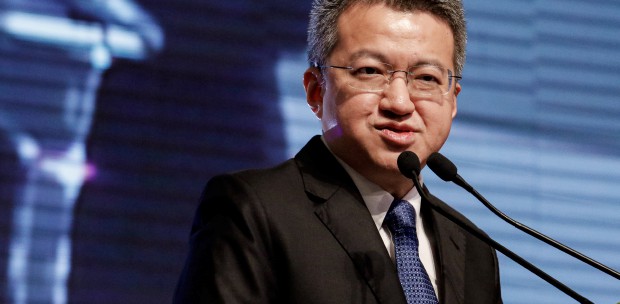THE Malaysian economy will show strong momentum in the second quarter of the year, but growth will likely taper in the second half of the year and next year said Maybank.
The momentum from the annualised 6.2 per cent growth in the first quarter remained positive between April and June as industrial output — representing manufacturing, mining and power sectors that make up 35 per cent of gross domestic product — rose 5.5 per cent.
Export and import growth expanded further to 17.5 per cent year-on-year and 8.4 per cent year-on-year in April-May, sustaining the external demand recovery as exports rebounded.
Maybank Investment Bank research chief economist Suhaimi Ilias and his team described external demand as changing its position from being a drag to a driver in the economy.
“The index of leading economic indicators is signalling that growth is tapering going forward,” they warned.
This is partly due to the base effect from 2013, which was a year of two halves growth-wise, from a slowdown to 4.4 per cent in the first half of 2013 followed by the pick-up to 5.1 per cent in the second half of 2013.
The current trend in export growth is also reflective of the base effect where it contracted in the first half of last year before the rebound.
Tapering growth also reflects the impact of fiscal consolidation measures such as the ongoing subsidy rationalisation and the introduction of the Goods and Services Tax as well as hikes in the benchmark interest rate on domestic demand.
Bank Negara Malaysia raised the Overnight Policy Rate by 25 basis points to 3.25 per cent last week.
Maybank expects another 25 basis points increase is on the cards by end of the year, based on the hawkish tone of the central bank which hints at further adjustments in the monetary policy.
“Amid the high and rising household debt to GDP, this will add to consumers’ living costs and reduce purchasing power via higher outlays on debt servicing that cut into their disposable income.”
On budget consolidation measures, it noted that the government remains committed to containing its deficit spending further with the target of achieving a balanced budget by 2020.
“Budget deficit in the first quarter was -5.1 per cent of GDP (down from -5.2 per cent in the fourth quarter of 2013 and -6.4 per cent in the first quarter of 2013).
“This is on robust revenue growth of 12.4 per cent year-on-year (6.8 per cent in the fourth quarter of 2013) well above the government’s total net expenditure growth of 5.9 per cent year-on-year.”
Domestic demand accounts for slightly over 90 per cent of GDP, leaving less than 10 per cent being driven by external demand.
“Keeping domestic demand and GDP growth momentum intact will be investments, particularly with the Economic Transformation Programme-related cornerstone projects.”
On subsidy rationalisation, Maybank said after the increase in electricity tariff early this year followed by a hike in gas prices, next in line is a review of the fuel subsidy mechanism by end-2014, if not early-2015.
The research house said the inflation rate is expected to average 3.5 per cent this year and rise to four per cent next year.




